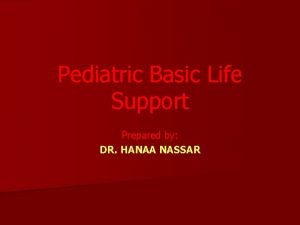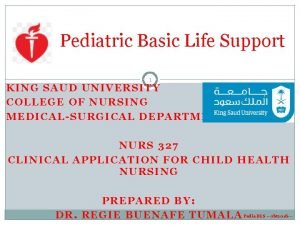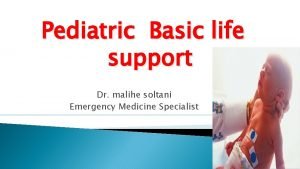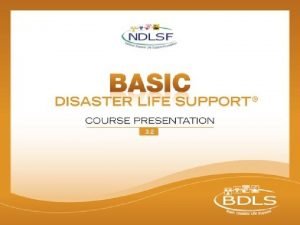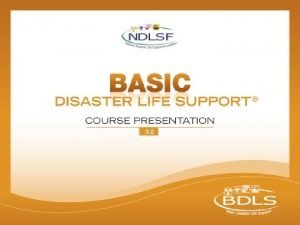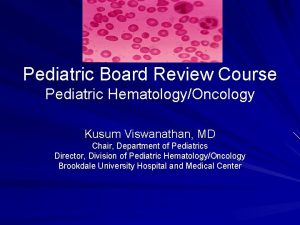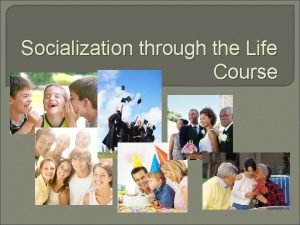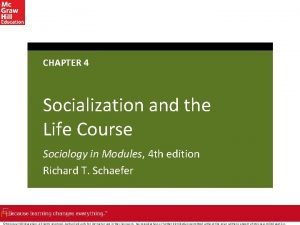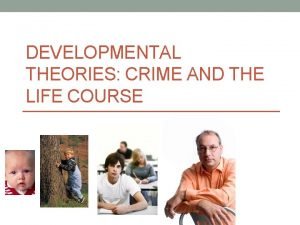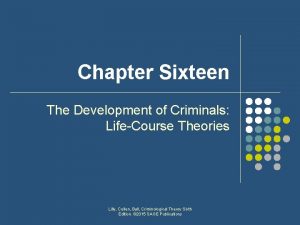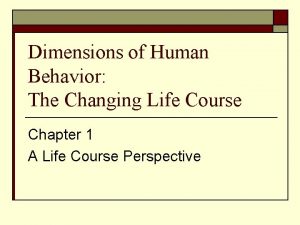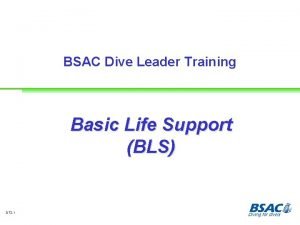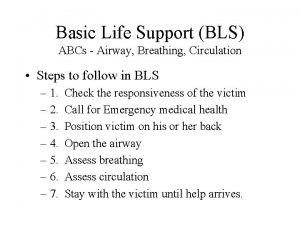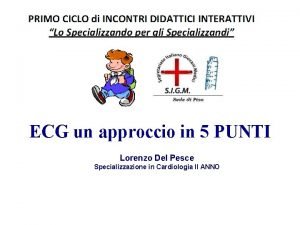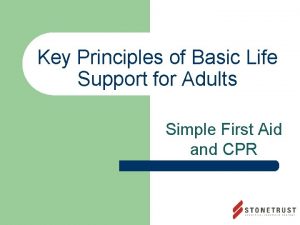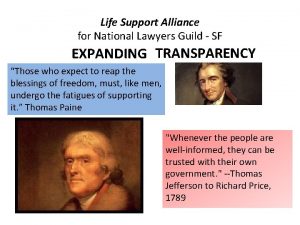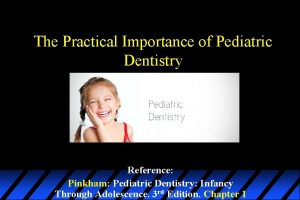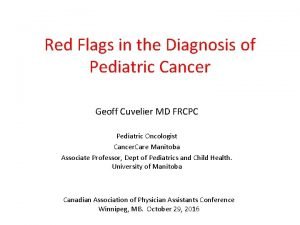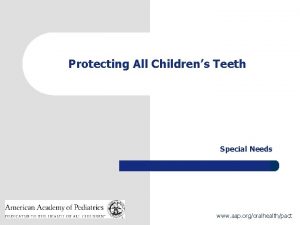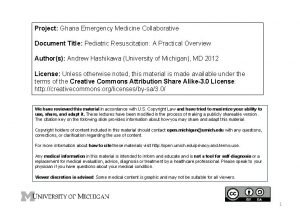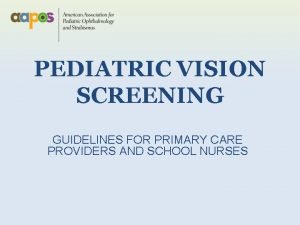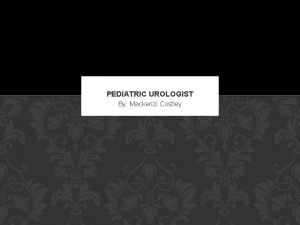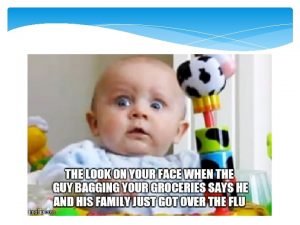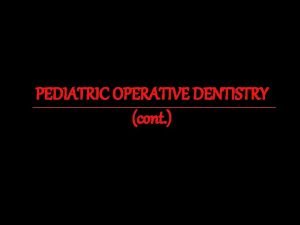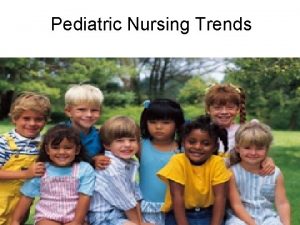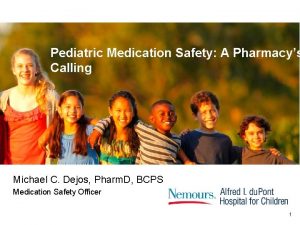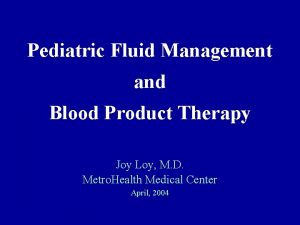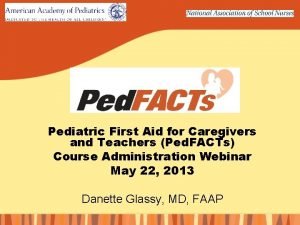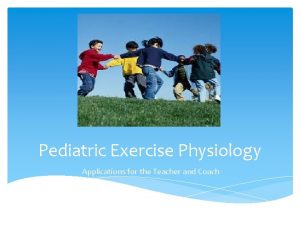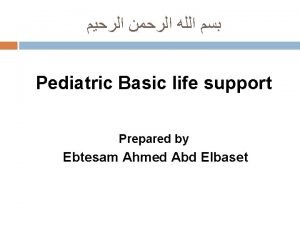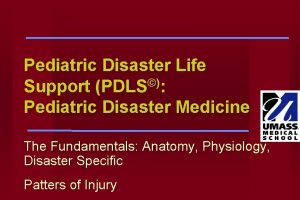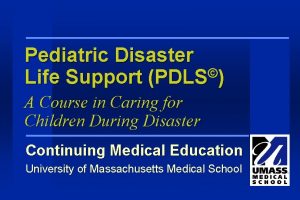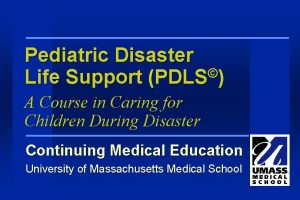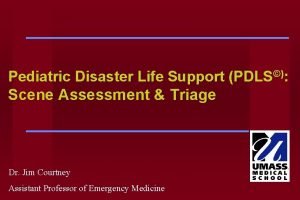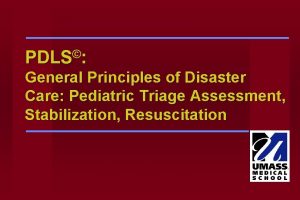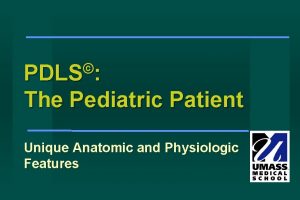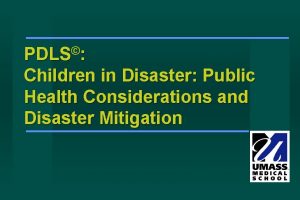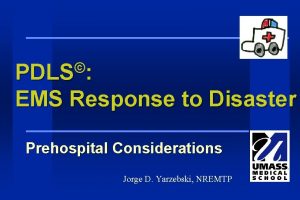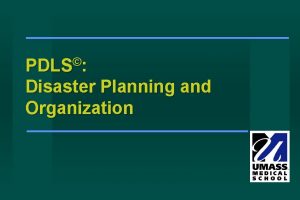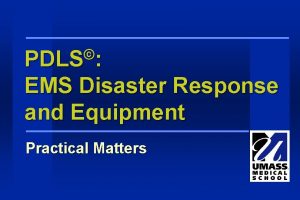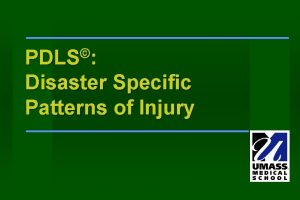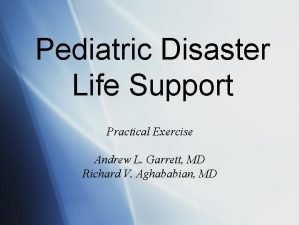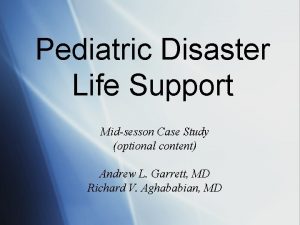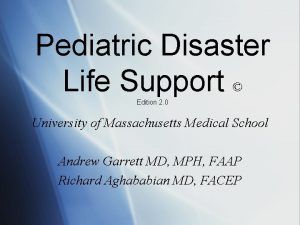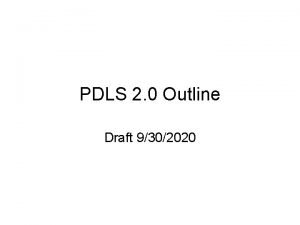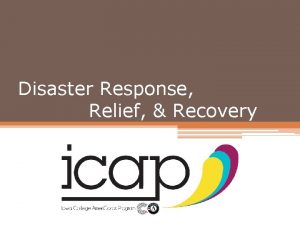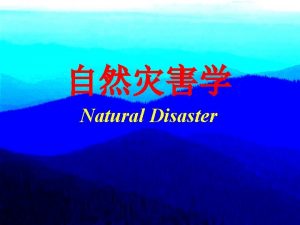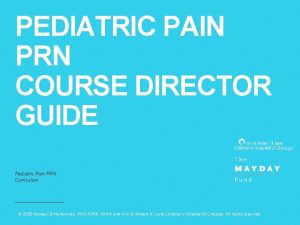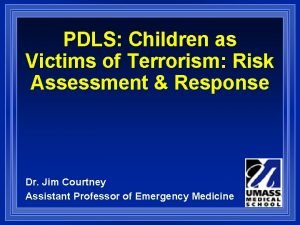Pediatric Disaster Life Support PDLS A Course in









































- Slides: 41

Pediatric Disaster © Life Support (PDLS ) A Course in Caring for Children During Disaster Continuing Medical Education University of Massachusetts Medical School

© PDLS : Psychosocial Issues: Children in Disasters

Disasters have Significant Psychological Impact on Children


PDLS - Psychosocial Issues � A “Bio-Psycho-Social” approach to victim management is best � Recognizes that effective preparedness and response requires integration of three realms Biological Psychological Social

PDLS - Psychosocial Issues - Anatomy and Physiology unique to children - Focus on vulnerabilities of children, not on resuscitation - Discuss relationship to: Environmental exposure (heat, cold, entrapment) Decontamination Susceptibility to Chemicals, Toxins Behaviors that increase risk Immature immune systems Biological Lack of verbal skills Lack of self-preservation skills

PSYCHOLOGICAL - A child's emotional Response to Disaster - How to anticipate and recognize problems - How long do these disorders last? - Integrating these concepts into disaster preparedness and response plans

SOCIAL - Kids are irreversibly integrated into our society • If children are not accounted for, parents will not comply with officials - Adapting to the concept that children may be intentional targets of terrorism - Role of parents in disaster - Role of media in disaster, a double edged sword - Role of schools, where children spend the bulk of their time away from home - Children routinely cause increased stress in emergency providers

Interplay of Medical and Mental Health Triage � Separate mental health triage and treatment area may be established - Once medically cleared Separate child from adult mental health area Photo Credit: FEMA

Interplay of Medical and Mental Health Triage � Primary triage: Physical health must take first priority - Walking, crying patients that have good airways are triage category ambulatory � Secondary triage: Identify patients with signs of acute distress - Panic/fear Confusion Disorientation Anger Withdrawn or apathetic Photo Credit: FEMA

Infants and severely cognitively disabled don’t understand disaster Provide: § Feeding § Comfort § Familiar caretakers Photo Credit: FEMA

Toddlers, preschoolers and moderately cognitively disabled � Concerned about consequences of disaster � Reactions often are behavioral disturbances, mood changes and anxiety � Can comprehend absence of parents but not the permanence of death Photo Credit: FEMA

Specific Responses of Toddlers to Disasters �Reaction reflects that of parents �Regressive behaviors �Decreased appetite �Vomiting, constipation, diarrhea �Sleep disorders (insomnia, nightmares) �Tics, stuttering, muteness

Specific Responses of Preschoolers to Disasters �Clinging �Reenactment via play �Exaggerated startle response �Irritability �Posttraumatic stress disorder

Specific Responses of School Age Children to Disasters (5 -12) �Most marked reaction �Fear, anxiety �Increased hostility with siblings �Somatic complaints �Sleep disorders �School problems

School Age Children to Disasters (continued) �Social withdrawal �Reenactment via play �Apathy �Posttraumatic stress disorder �Decreased interest in peers, hobbies, school

Adolescents (13– 19) � Have full understanding of disaster’s causes and consequences � Tend to retain sense of omnipotence, boys > girls � May suffer depression and anxiety � May be aggressive to self or others, risk of suicide � May become sullen and withdrawn Photo Credit: FEMA

Specific Responses of Adolescents to Disasters � Decreased interest in social activities, peers, hobbies, school � Anhedonia (inability to experience pleasure) � Decline in responsible behaviors � Rebellion, behavior problems � Somatic complaints � Sleep disorders

Adolescents Response to Disasters (continued) �Eating disorders �Change in physical activity �Confusion �Lack of concentration �Risk-taking behaviors


Stress response in children �“Fight or flight” �Adrenaline/epinephrine mediated �Arousal state �Increased startle, response, agitation �Increased heart rate, respiratory rate, blood pressure

Alternate stress response �“Freeze and hide” �Vagal nerve stimulus �Opposite of “fight or flight” �Blunted reactions, affect, responses �Lowered heart rate, respiratory rate, blood pressure �Syncope may result

Short term reactions �Disbelief �Denial �Anxiety �Grief �Altruism �Relief

Short-term reactions �Grief, loss, anger, guilt �Coping strategies - Regression – loss of developmental milestones - Clinging and increased dependency - Helpfulness – more useful in older children - Acting out – competing for attention


Second Stage: Immediate Post. Event Period Time �A few days to several weeks after disaster Reaction �Clinging, appetite changes, regressive symptoms, somatic complaints, sleep disturbances, apathy, depression, anger, and hostile delinquent acts

Aggressive/Defiant Behavior �Toddlers and preschoolers may exhibit hostile behaviors such as hitting and biting. �School age children may get involved in peer fights. �Adolescence may become delinquent or rebellious.

Aggressive/Defiant Behavior (continued) Recommendations �For the younger child, limit setting may be of help. �With adolescents, involving them in the rebuilding of the community or helping with younger children or elderly may aid recovery.

Repetitious Behavior �Most commonly seen in toddlers and preschoolers after disaster. �These children will reenact crucial details of the disaster. �Other repetitive behaviors are recurrent nightmares and frequent flashbacks. �The Healthcare worker should allow the child or preschooler to reenact the events as these are therapeutic and can help in recovery.

Somatic Symptoms �These include headaches, abdominal pain, and chest pain and are commonly observed in children and adolescents. �Reassurance by the healthcare worker can be of help after evaluation. �Counseling and mental health intervention may be necessary for the victims as well as the Healthcare workers.

Delayed Post-event Period (months) � Depression - More likely to manifest sleep, somatic and behavioral symptoms than adults Family and personal history of depression increase risk Exacerbated by re-exposure to venue of or media

Delayed Post-event Period � Post-Traumatic Stress Disorder (PTSD) - An anxiety disorder with psychological and physical symptoms including: Intrusive thoughts, memories and nightmares Exacerbation by anniversaries and reminders of the event Aggression, anger and fear Apathy, numbness

Delayed Post-event Period � Children have special susceptibility to certain risk factors - Witnessing terror in parents and loved ones - Repeated exposure to media of the disaster Photo Credit: FEMA � Little data about preventing and treating PTSD in children

People with Special Healthcare Needs (PSHCN) Cognitive and/or Emotional Disabilities � Reaction to disaster similar to typical children with important differences � May be and feel particularly vulnerable due to technology dependence and impaired mobility - Cognitively impaired children may respond similarly to chronologically younger children Emotionally disabled children are at increased risk for acute and chronic negative disaster responses Photo Credit: FEMA

Caring for Disaster Mental Health Adapted mental health first aid: Strategy for identifying children in need of help �Introduce yourself in a developmentally appropriate way �Explain that you are trying to help �Remain non-threatening but be honest and direct - Preserve credibility Avoid unrealistic promises or false statements Photo Credit: FEMA

Caring for Disaster Mental Health �Listen for anxiety, fear about location of care-takers and immediate needs - Acknowledge the child’s emotions Give reassurance and information �If available, guide child to mental health triage/treatment facility �Encourage self-help strategies - Guided imagery Exercise Preservation of routine

Caring For Disaster Mental Health �Play �Home �Drawings �Nightmares Guided play/imagery to take control of scenario and make a happy ending.

Caring For Disaster Mental Health Treatment/Recommendations � Parents, teachers, and Healthcare workers should create and maintain a predictable schedule for children. � Night lights, stuffed animals, and reassurance are helpful. � Compassion is helpful but punishment is not. � Consultation with psychiatrist or psychiatric social worker may be a benefit.

Responding to children’s needs �Parents should know age appropriate responses �Monitor and limit media exposure to disaster coverage �Early counseling may reduce long term negative effects

Responding to children’s needs �Rehearsal of plan reduces anxiety and gives a sense of control - Rehearsal of plan with a live drill that has children acting out roles Step #1 exercise – school bus accident Step #2 exercise – school evacuation

Normal Recovery �Talking with others �Coping mechanisms - Learning healthy mechanisms �Counseling
 Chest compression ratio in newborn
Chest compression ratio in newborn Basic life support sequence
Basic life support sequence Pediatric emergency life support
Pediatric emergency life support National disaster life support foundation
National disaster life support foundation National disaster life support foundation
National disaster life support foundation Pediatric board review courses
Pediatric board review courses One and a half brick wall
One and a half brick wall Course number and title
Course number and title Chaine parallèle muscle
Chaine parallèle muscle What are signal words
What are signal words Socialization
Socialization Life course sociology definition
Life course sociology definition How do life course theorists view criminality?
How do life course theorists view criminality? Developmental theory criminology examples
Developmental theory criminology examples Life course theory crime
Life course theory crime Life course perspective
Life course perspective Basic life support sequence
Basic life support sequence Abcs of life support
Abcs of life support Advanced life support
Advanced life support Battiti ectopici ventricolari forum
Battiti ectopici ventricolari forum Encyclopedia of life support systems
Encyclopedia of life support systems Usi manufacturing
Usi manufacturing Principles of basic life support
Principles of basic life support National lawyers guild sf
National lawyers guild sf Unc chapel hill hematology oncology
Unc chapel hill hematology oncology Miami pediatric nephrology seminar
Miami pediatric nephrology seminar Define pediatric dentistry
Define pediatric dentistry Headache red flags
Headache red flags Pediatric seizures
Pediatric seizures Vital sign ranges
Vital sign ranges Plasmlyte
Plasmlyte Aapos vision screening app
Aapos vision screening app Pediatric urologist salary
Pediatric urologist salary Spo2 normal range by age chart
Spo2 normal range by age chart Isthmus in cavity preparation
Isthmus in cavity preparation Trends in pediatric nursing
Trends in pediatric nursing Common pediatric medications
Common pediatric medications Volutrol administration set
Volutrol administration set 421 rule
421 rule First aid for caregivers
First aid for caregivers Pediatric exercise physiology
Pediatric exercise physiology Pediatric triangle assessment
Pediatric triangle assessment
